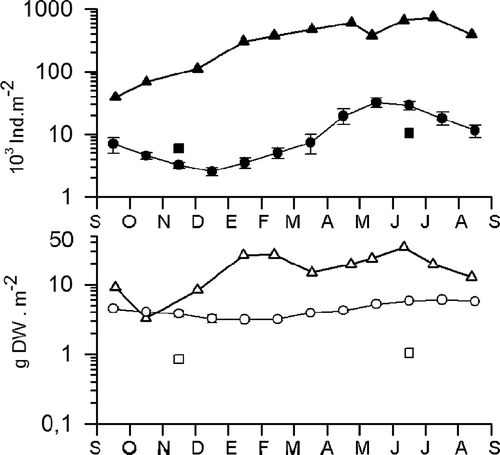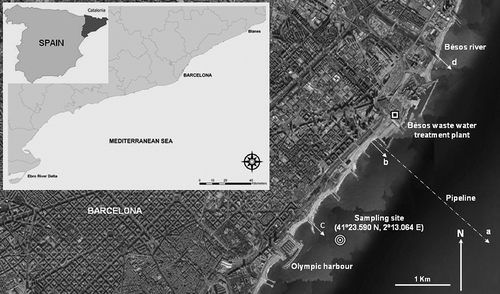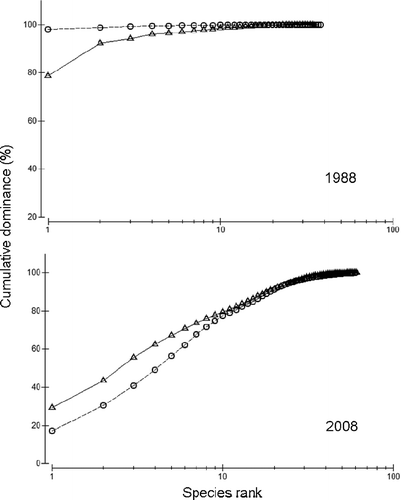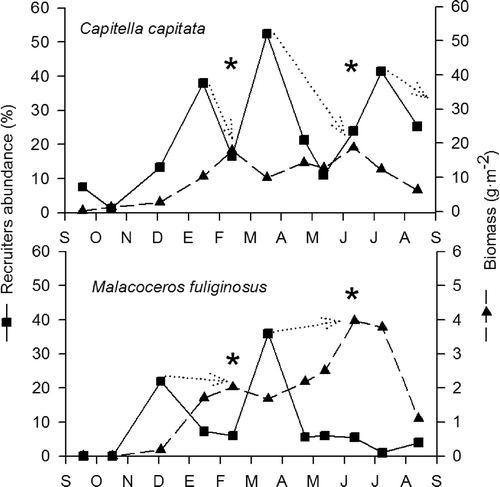Figures & data
Table I. Sediment characteristics and pollutant indicators (na, data not available)
Table II. Species composition with mean annual macroinfaunal abundance (ind. m–2) and biomass (g dry wt m–2) for the two periods analysed
Figure 2. Seasonal abundance (left-hand graphs) and biomass data (right-hand graphs) of key species at the studied station (September 1987 to September 1988).
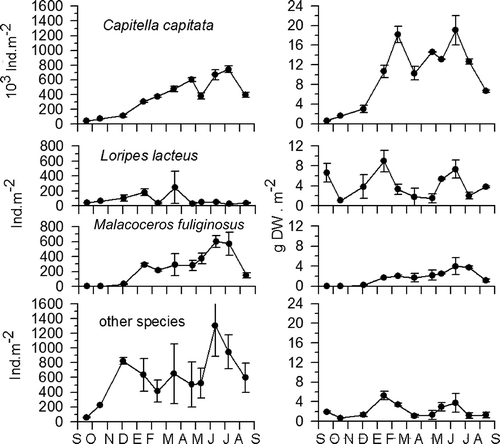
Table III. Mean annual main community parameters and biotic indices calculated
Figure 3. Abundance data (upper graph) and biomass data (lower graph) of the studied series and comparison with the reference station from the MacroBen database. Triangles represent data for 1987–88 from the studied site; squares represent data for 2008 from the studied site and circles are data from the Blanes reference station – pooled data from 1992 to 1996.
